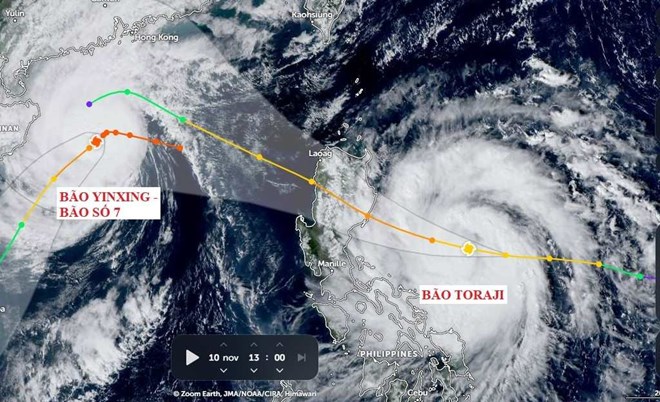A new study shows that the number of tropical storms forming in the East Sea increases significantly as El Nino moves to La Nina, especially during the cyclical La Nina period.
The frequency of storms in the East Sea is about 2.6 times higher than other La Nina transition types, mainly due to increased regional humidity, strong convergence of water vapor and the appearance of unusual atmospheric cyclones.
The study was conducted by scientists Lixia Pan, Jiepeng Chen, Xin Wang, Haigang Zhan, Wen Zhou & Johnny C.L. Chan, published in the journal of Climate and Atmospheric Sciences NPJ Climate and Atmospheric Science on February 17, 2025.
The study divides La Nina into three different types, including cyclical La Nina, multi-year La Nina, and single La Nina. Of these, the La Nina cycle has the strongest impact on storm formation in the East Sea.
The main causes are increased humidity, the influx of water vents from the Indian Ocean to the area, and the sea temperatures in the Philippine Sea remain high due to the prolonged impact of the previous El Nino. These factors have created favorable conditions for storms to form with greater frequency than other La Nina stages.

The special feature of this study is the shift in approach to the impact of ENSO (climatic fluctuations between El Nino and La Nina).
While most studies have focused on the effects of El Nino before, the transition to La Nina is now more focused.
This not only helps to better understand the laws of tropical storms but also opens up new research directions in the field of climate prediction and future disaster response.
These findings are of great significance in disaster forecasting and response. By understanding the link between La Nina's transition and tropical storm surge, scientists can improve the accuracy of storm forecasts, helping authorities and people better prepare for dangerous storms.
However, the study also admits some limitations, as climate models used cannot directly simulate the formation of storms but only assess environmental conditions.
For a more comprehensive view, the researchers say future studies need to use more detailed models to clarify the interaction between climate change and tropical storm activity.











